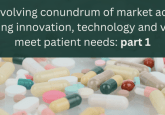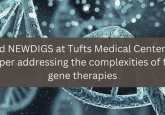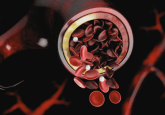CMS targets sickle cell disease for groundbreaking outcomes-based model to tackle equitable access to novel cell and gene therapies

In a new announcement by the Centers for Medicare & Medicaid Services (CMS), the Biden-Harris Administration has identified sickle cell disease (SCD) as the initial target for the Cell and Gene Therapy (CGT) Access Model. First proposed by the CMS in February 2023, this initiative aims to improve health outcomes, expand access to cell and gene therapies, and reduce healthcare costs for vulnerable populations.
SCD is a painful condition affecting more than 100,000 people in the US alone. SCD disproportionately affects Black Americans and lacks comprehensive treatment options. Those with SCD face a shorter life expectancy, grappling with complications like stroke and chronic end-organ damage, leading to increased emergency department visits and hospitalizations.
In late December, the FDA approved two milestone gene therapies for SCD, Casgevy (exagamglogene autotemcel; Vertex Pharmaceuticals and CRISPR Therapeutics) and Lyfgenia (lovotibeglogene autotemcel; bluebird bio.) By modifying the patient’s hematopoietic stem cells, both therapies address the genetic mutation that causes SCD. With high price tags, these treatments present a particular challenge for those on lower incomes who are reliant on Medicaid. Around 50–60% of people living with SCD are enrolled in Medicaid, which incurs nearly $3 billion annually for SCD-related health episodes. bluebird bio has previously announced the details of outcomes-based agreements for Lyfgenia with national payer organizations.
The CGT Access Model’s overarching goal is to simplify Medicaid access to innovative therapies, easing administrative burdens for states and focusing on enhancing access and health outcomes for individuals with SCD. The initiative addresses care delivery gaps and offers optional funding for activities promoting equitable access and comprehensive care for those undergoing gene therapy for SCD. CMS Administrator Chiquita Brooks-LaSure highlighted the potential cost savings and health benefits, stating:
“Increasing access to these promising therapies will not only help keep people healthy, but it can also lead to savings for states and taxpayers as the long-term costs of treating sickle cell disease may be avoided.”
Part of the broader strategy to lower prescription drug costs, the CGT Access Model was developed in response to President Biden’s October 2022 executive order. The CMS Innovation Center will lead the implementation of the model, testing outcomes-based agreements for innovative therapies starting in 2025, with a possible expansion to other types of CGTs in the future. Whilst precise details on the outcomes-based agreement approach were not included in the press briefing from CMS, they, “will negotiate financial and clinical outcome measures with drug manufacturers and then reconcile data, monitor results, and evaluate outcomes.” States can opt to participate in the initiative between January 2025 and 2026.
The Secretary of Health and Human Services, Xavier Becerra, emphasized the transformative potential of the CGT Access Model, stating, “Medical advancements are bringing us closer to a cure for SCD. Yet, many of the more than 100,000 Americans with SCD today face difficulty accessing effective health care and groundbreaking treatments. Our CGT Access Model gives us a chance to streamline a cumbersome process and put transformative cell and gene therapies within reach for Americans with sickle cell disease.”
Mixed reactions
While most opinions on the initiative are positive, some express concerns. Commenting on LinkedIn, Ashley Valentine, Co-founder and President of Sick Cells said, “We are excited to see this national approach to support OBAs, as it can offer more equitable access to treatment for SCD beneficiaries nationwide. It may address concerns in states that are hesitant to pay the high, one-time cost for the sickle cell gene therapies.”
The Sickle Cell Disease Association of America (SCDAA) also welcomed the model, saying, “SCDAA is excited about the model and appreciated that CMS engaged with our organization and the broader SCD community while developing the demonstration,” expressing that, “we are hopeful that this effort will help ensure that individuals living with SCD on Medicaid who are interested in pursuing gene therapy are able to do so.”
Ellen Licking, Vice President of Communications and Client Services at Real Endpoints, offered a cautious perspective, saying on LinkedIn, “This project is a way to enable access and put in place lessons learned from earlier outcomes-based arrangements for hepatitis C. But have we learned those lessons? CMS’s press release and fact sheet are light on the details of how this program will be executed.” Licking stressed the importance of CMS making the initiative successful not only for SCD, but also as a precedent for future broad outcomes-based arrangements in Medicaid, stating, “We really can’t afford for it to fail.”
Want regular updates on the latest real-world evidence news straight to your inbox? Become a member on The Evidence Base® today>>>






